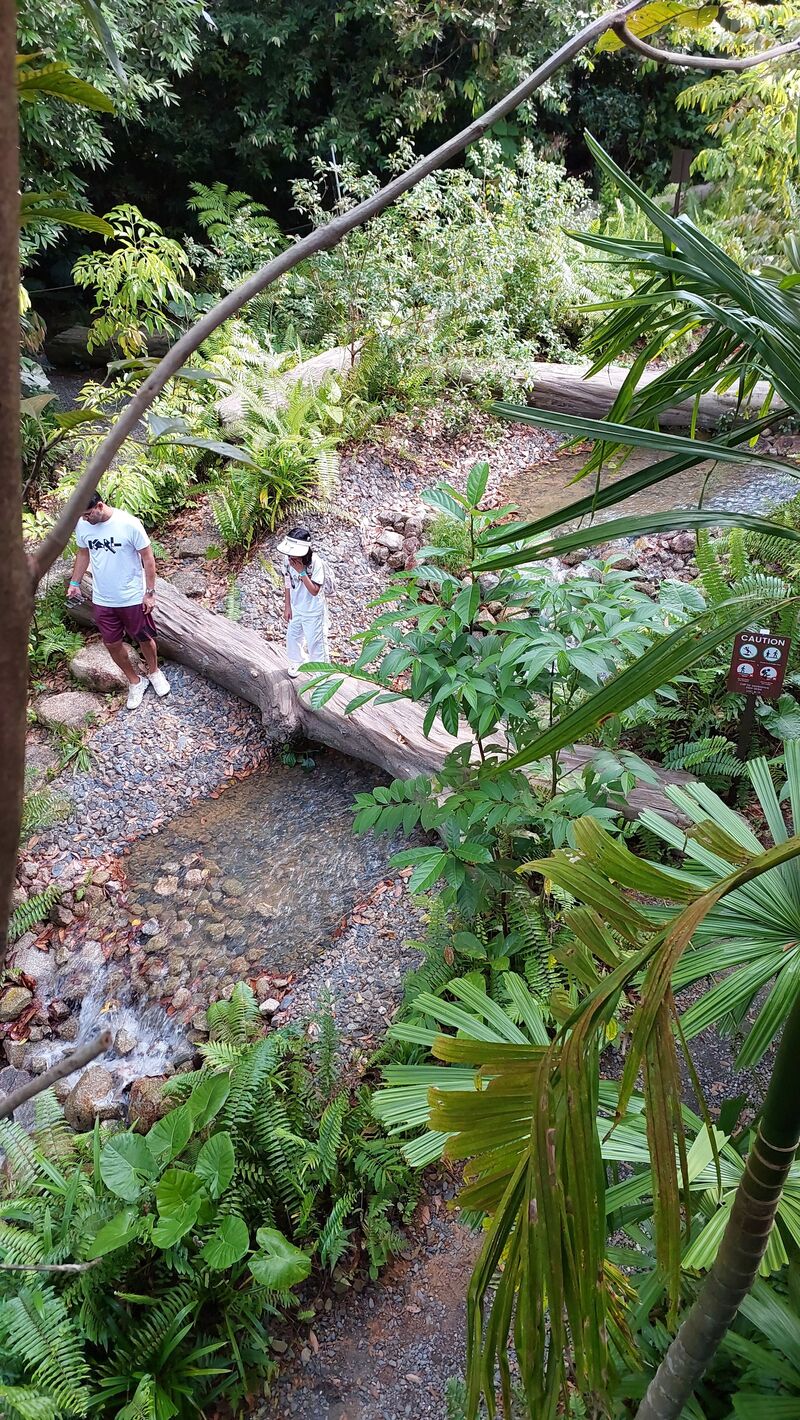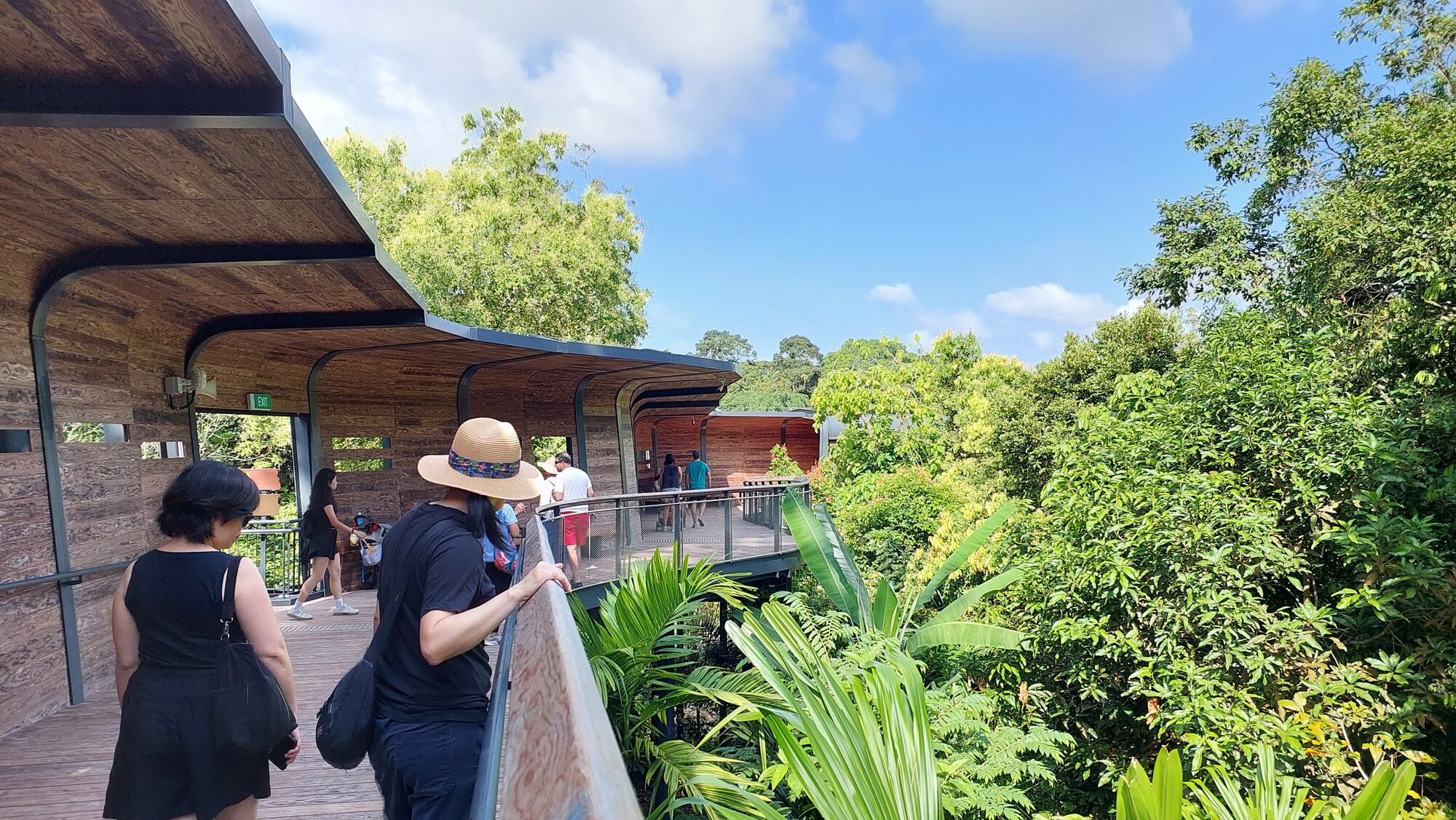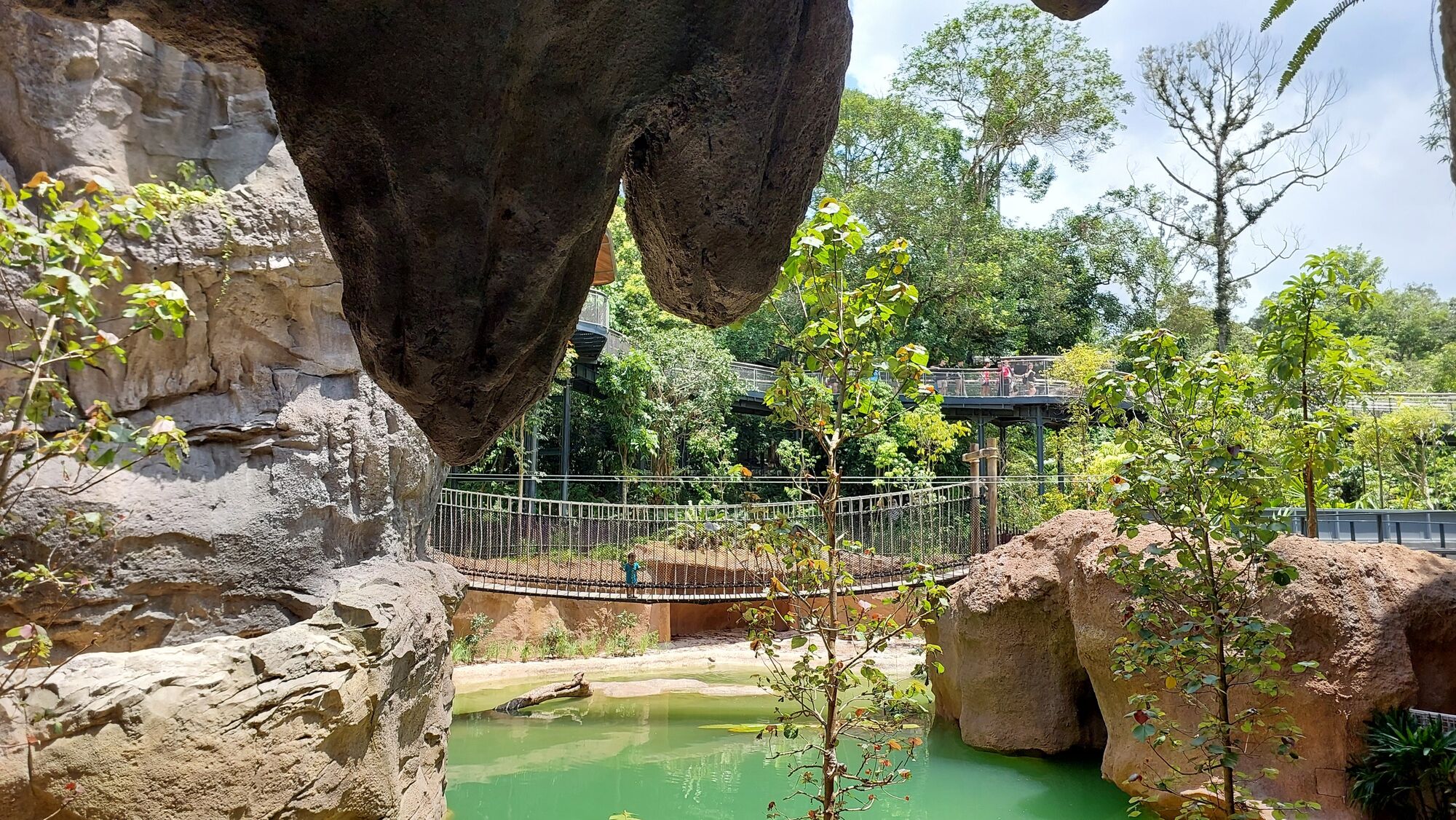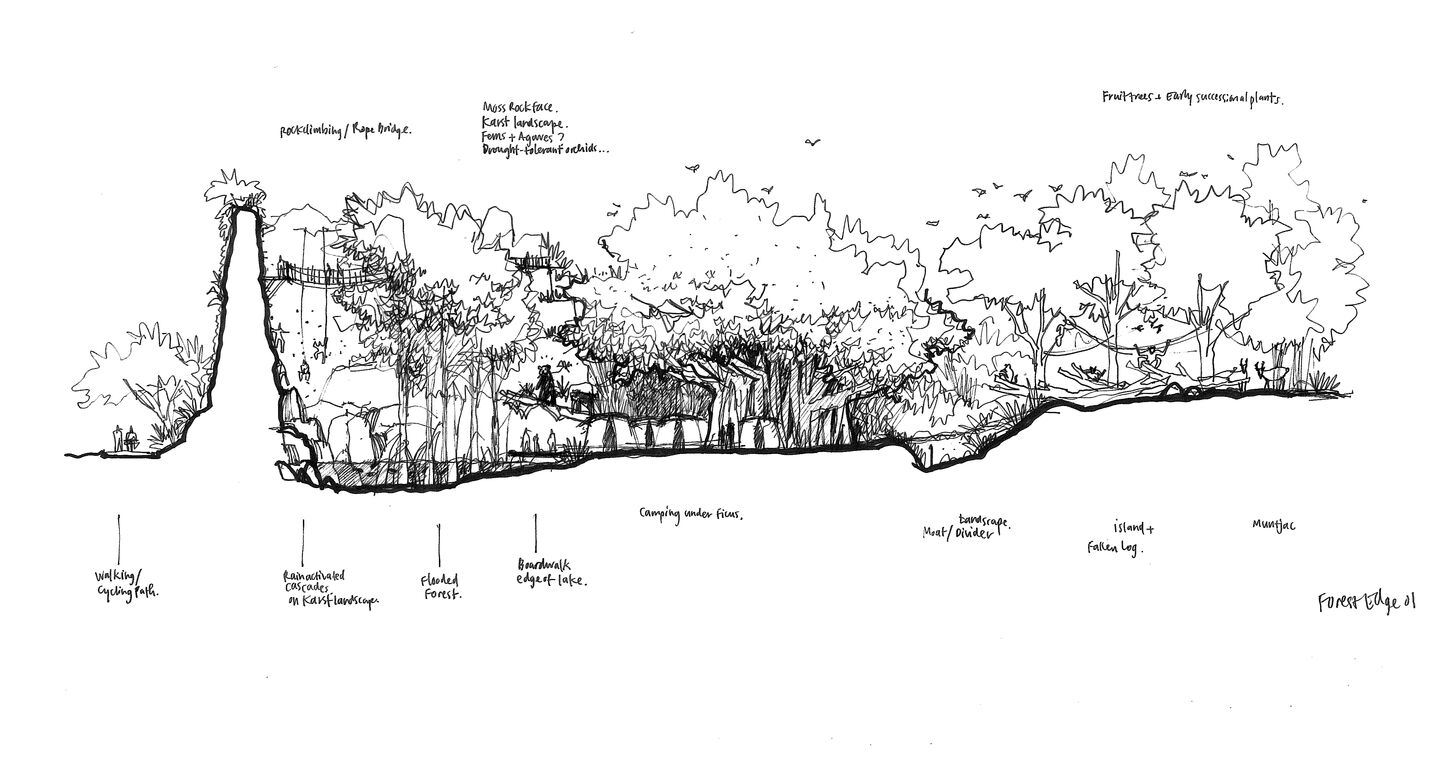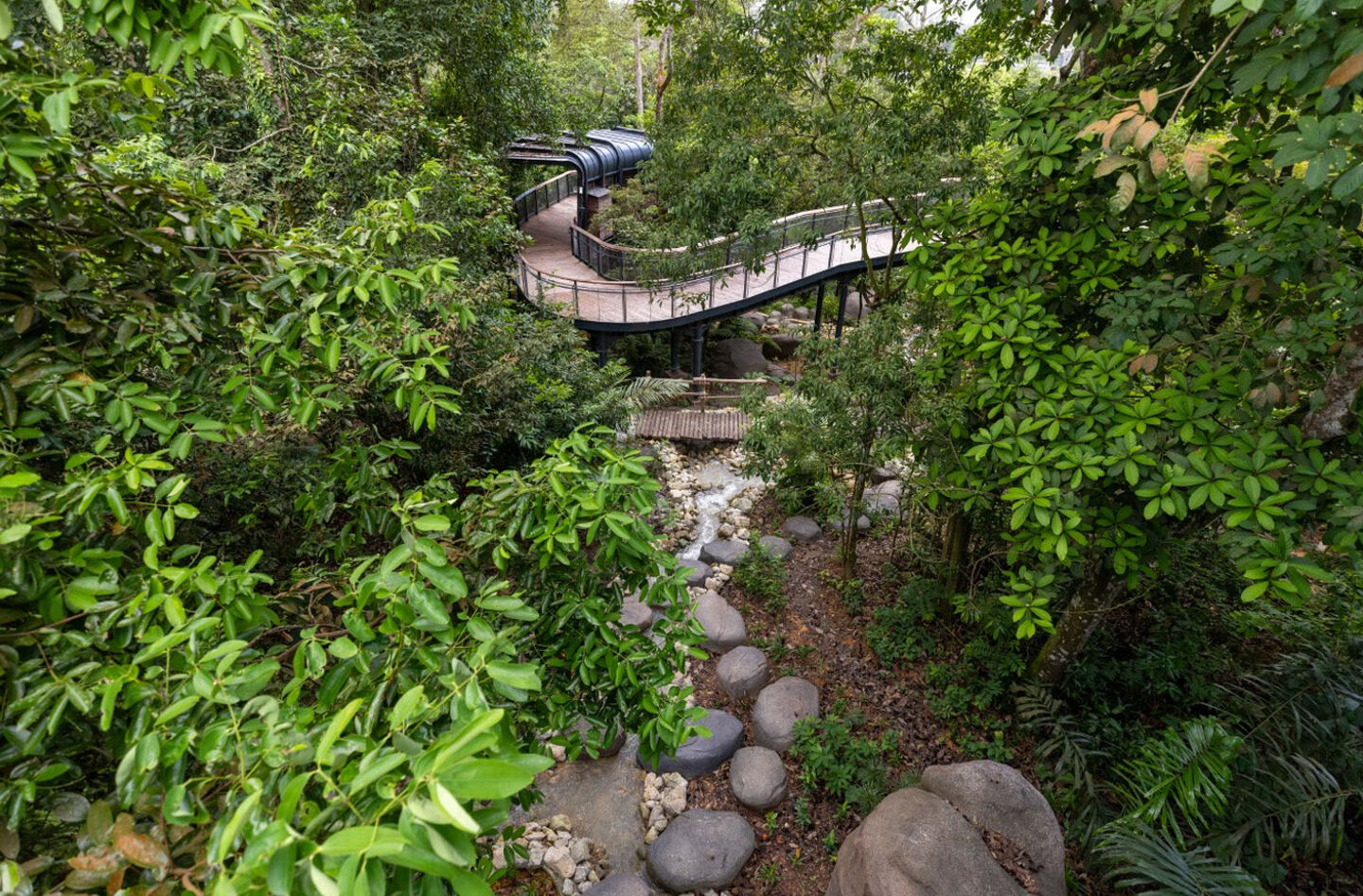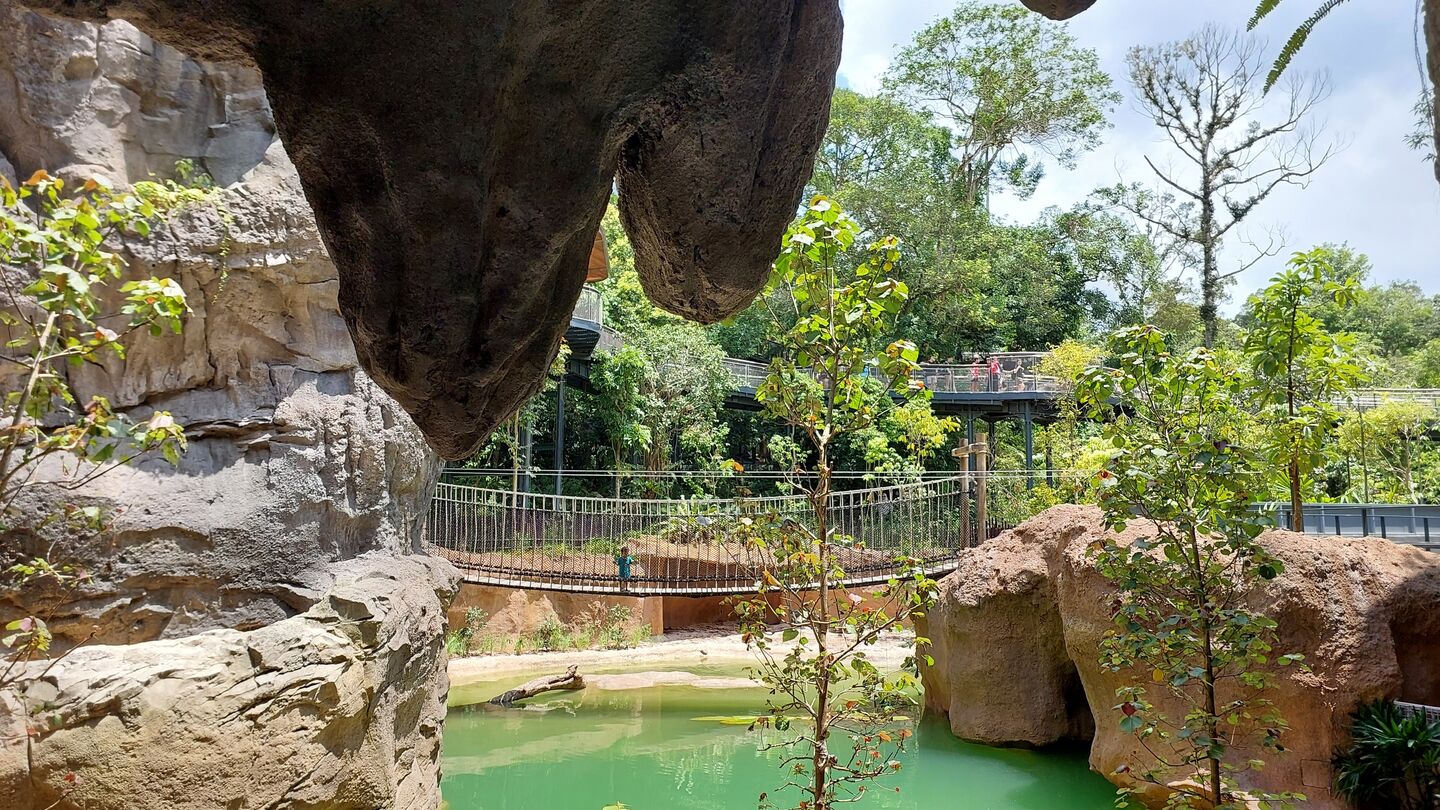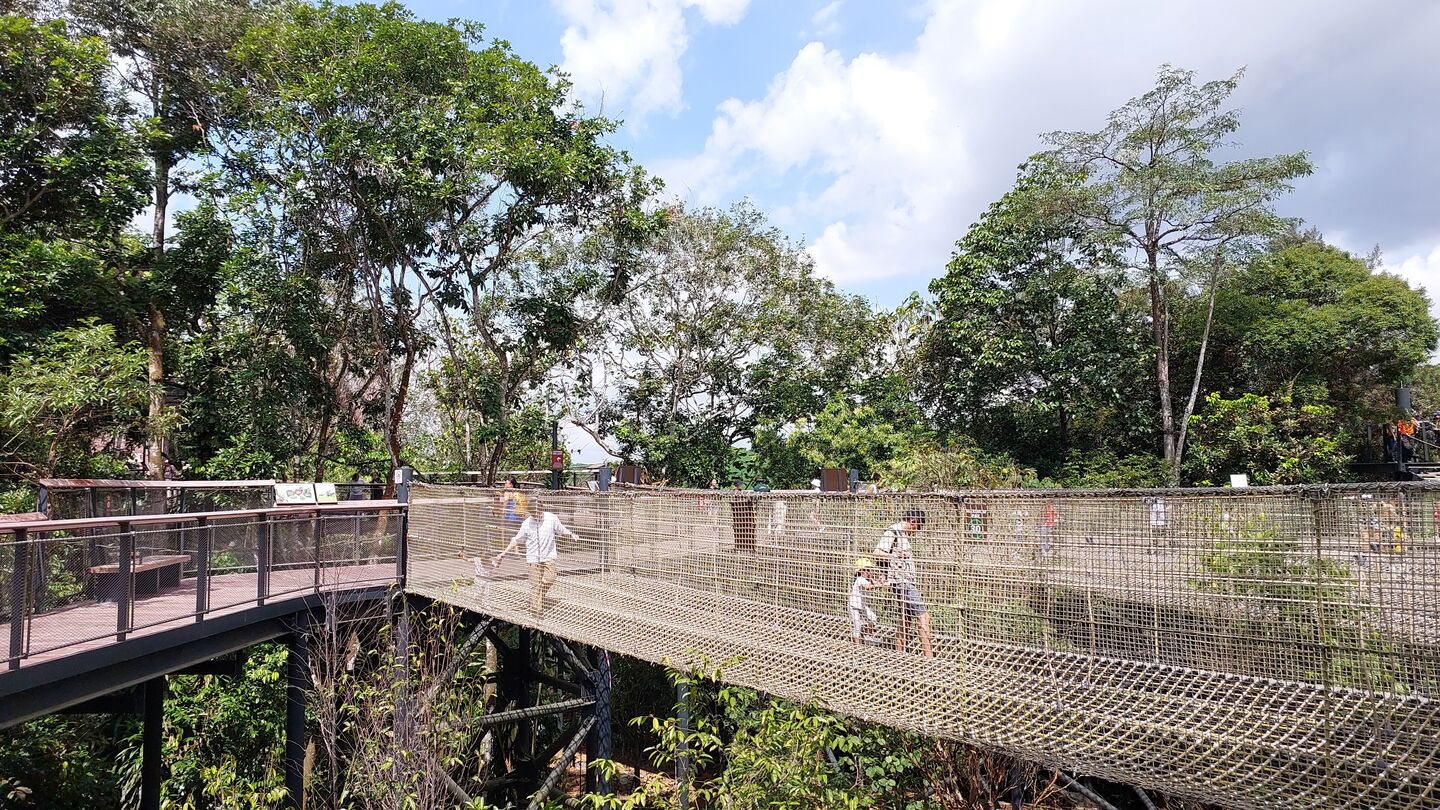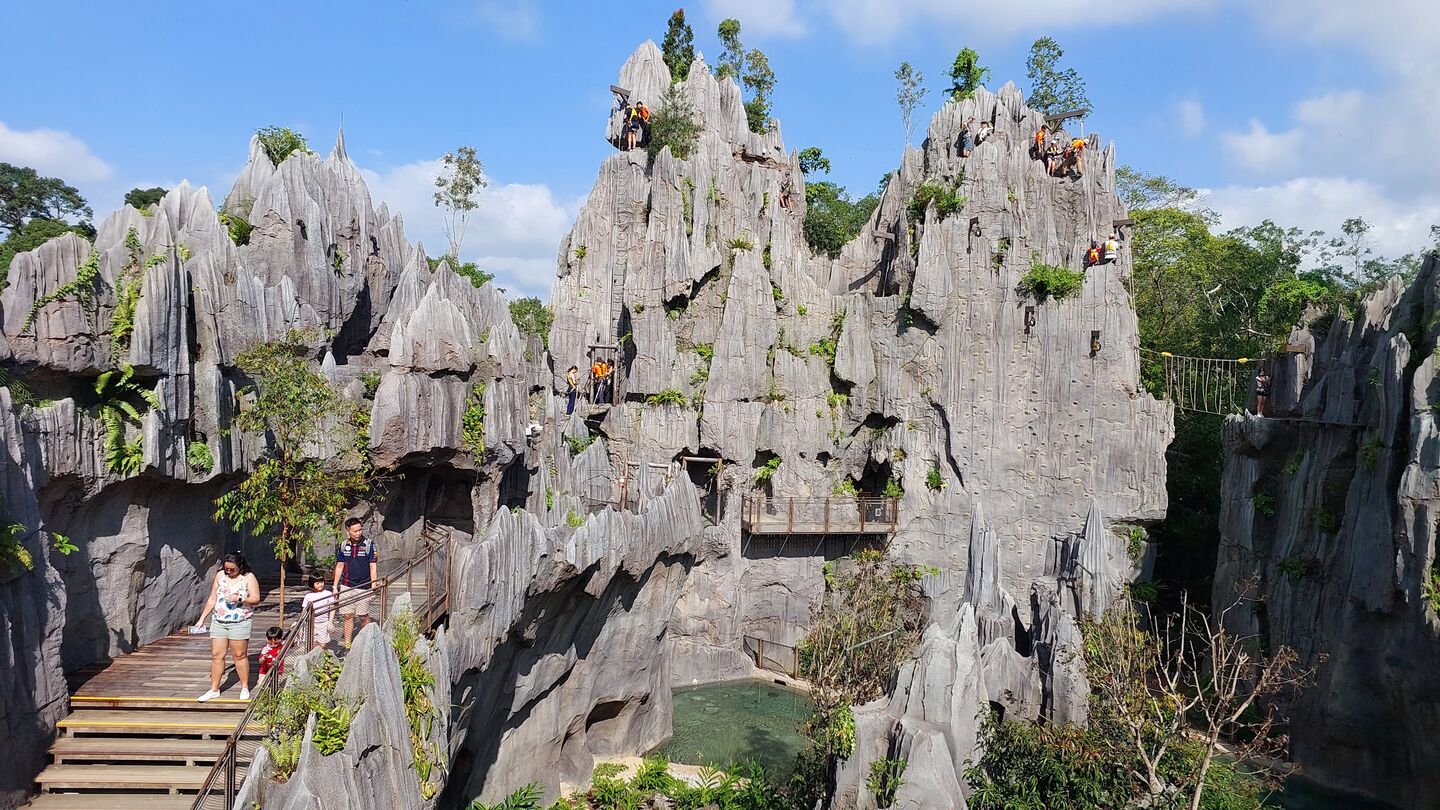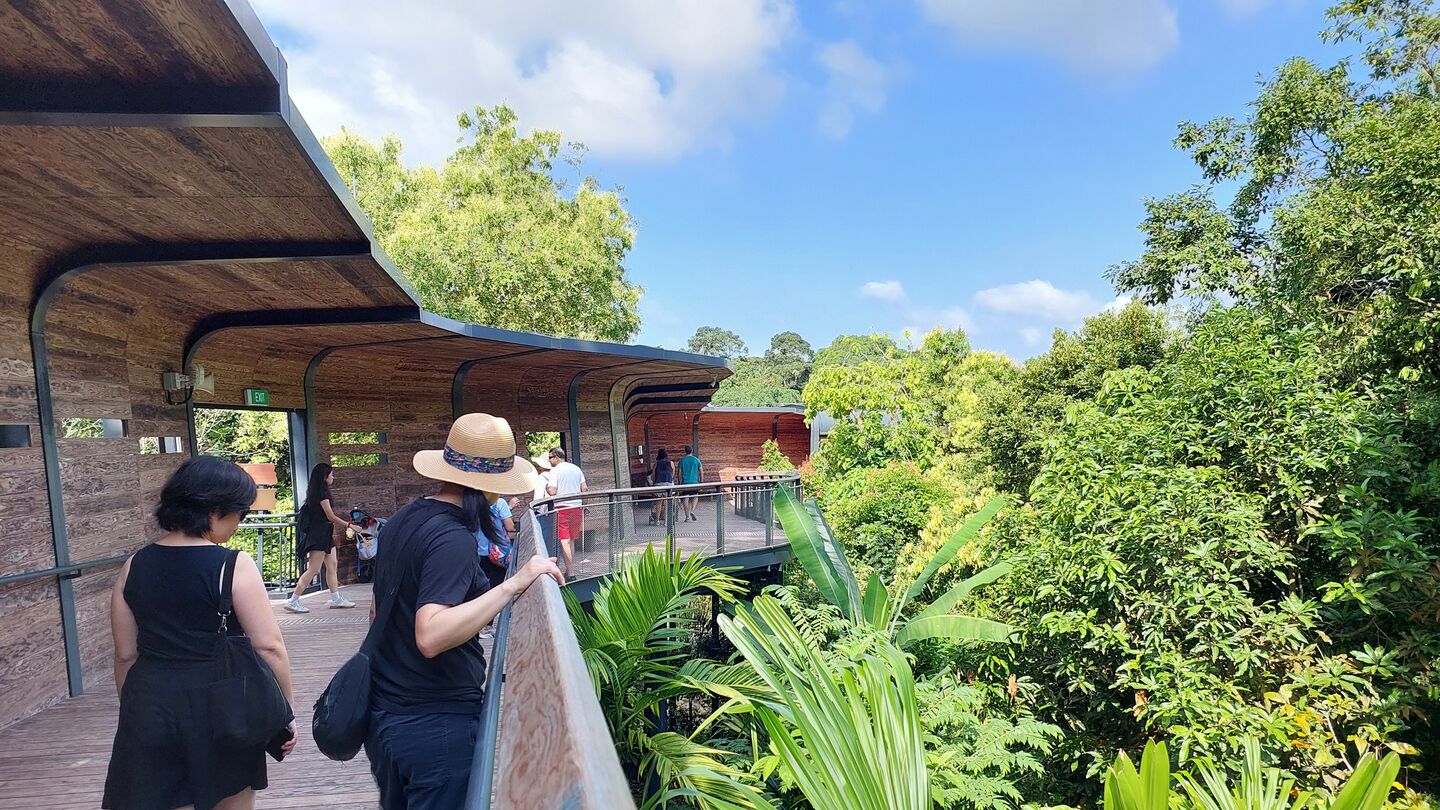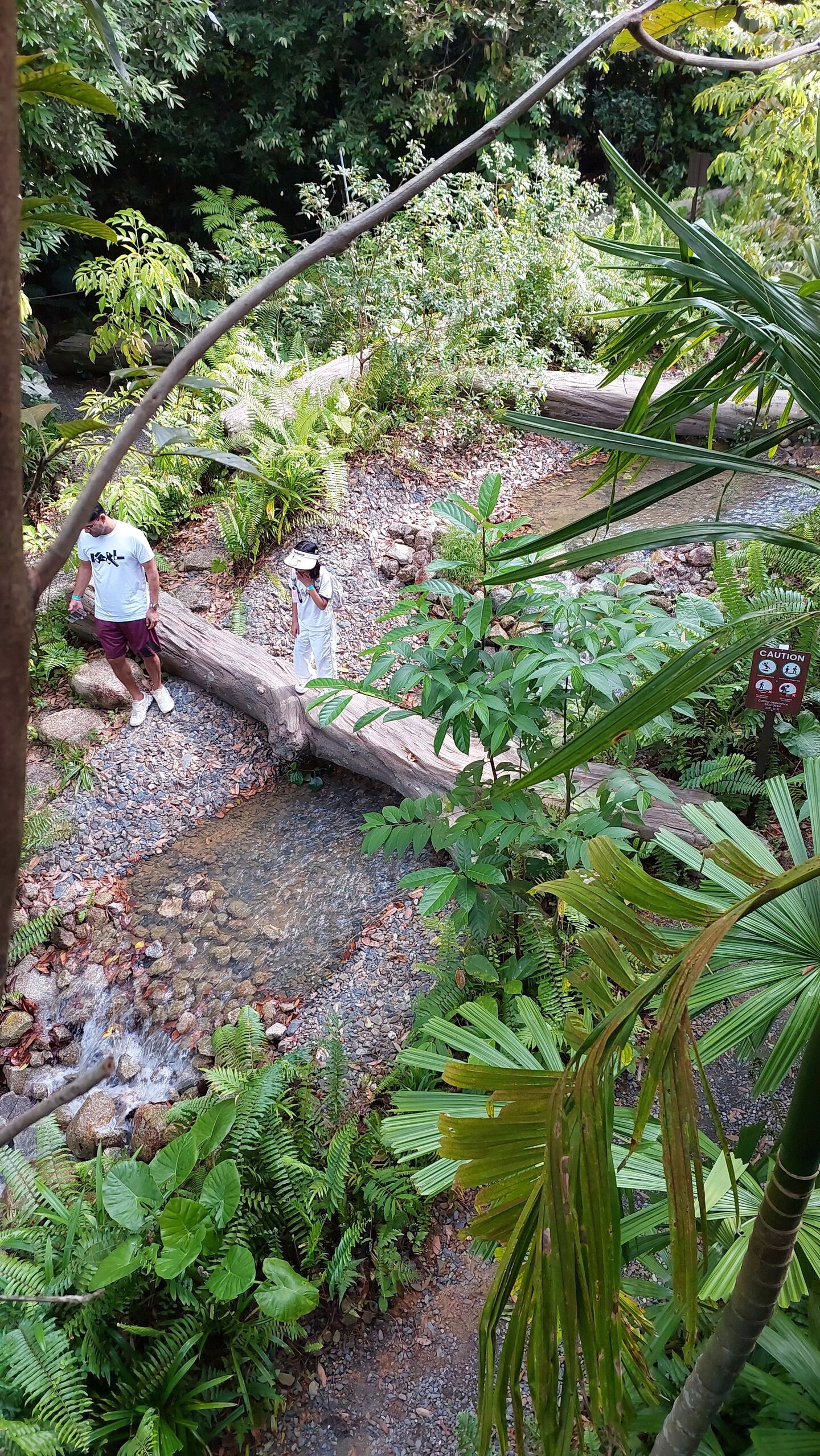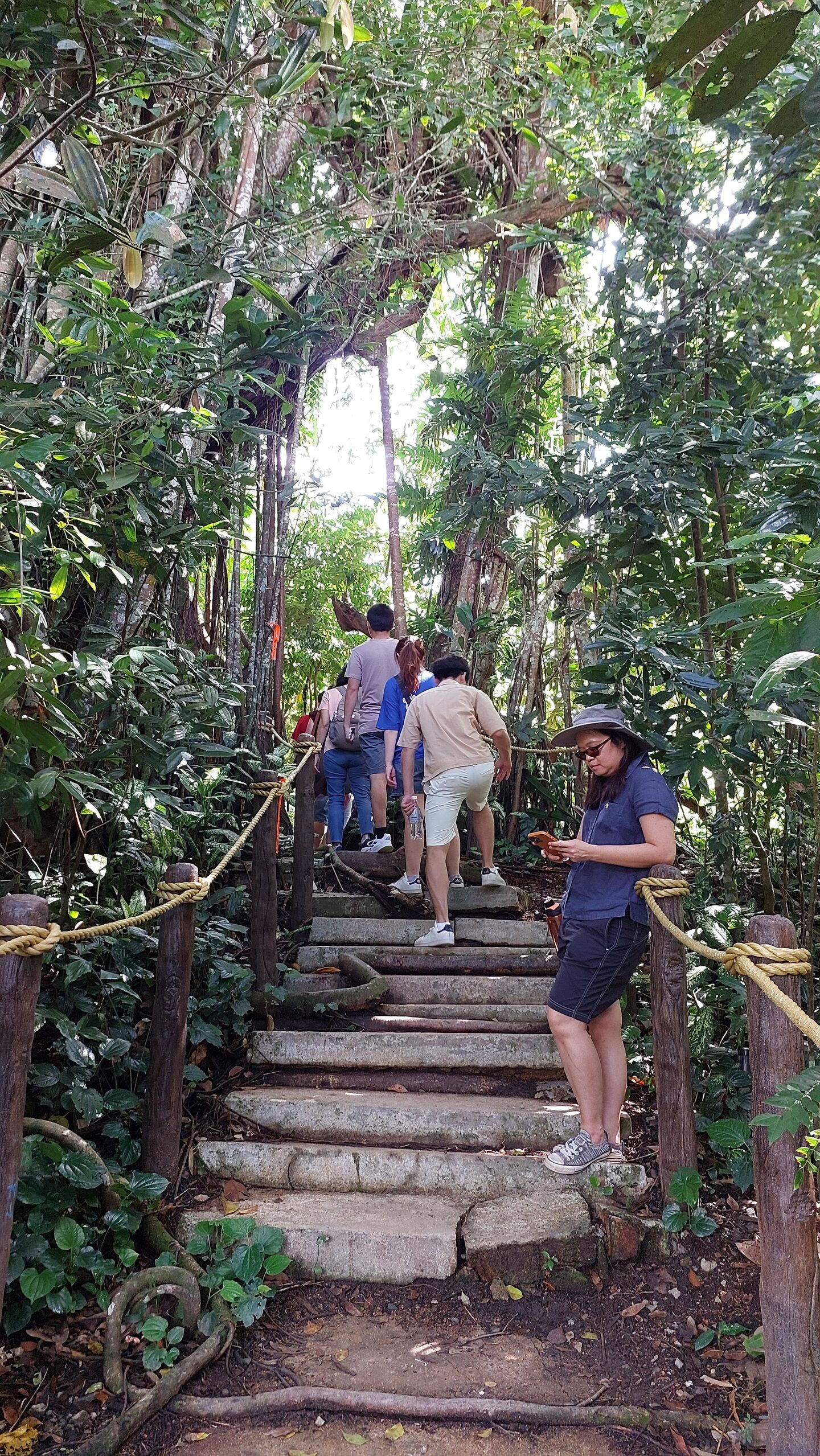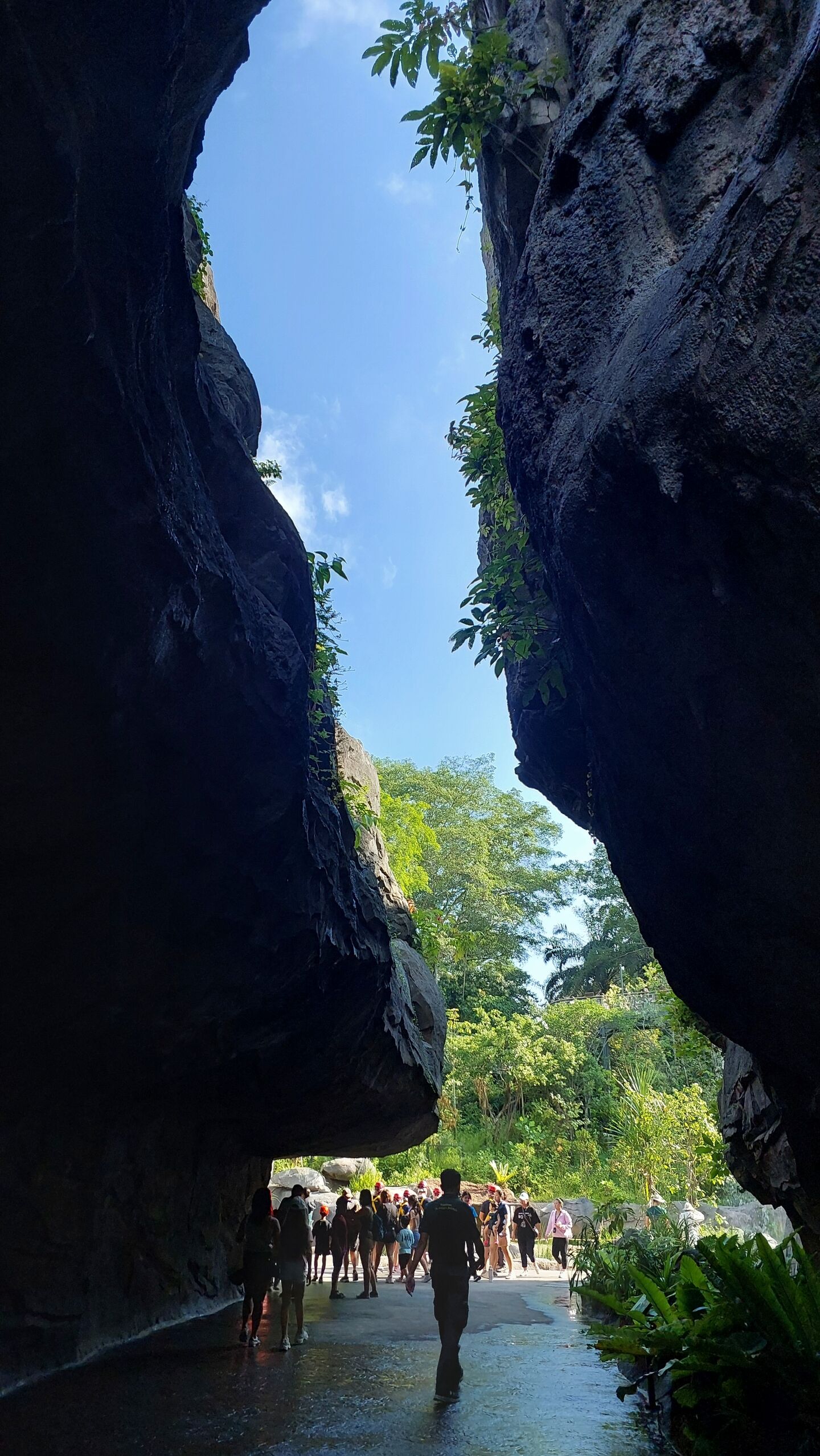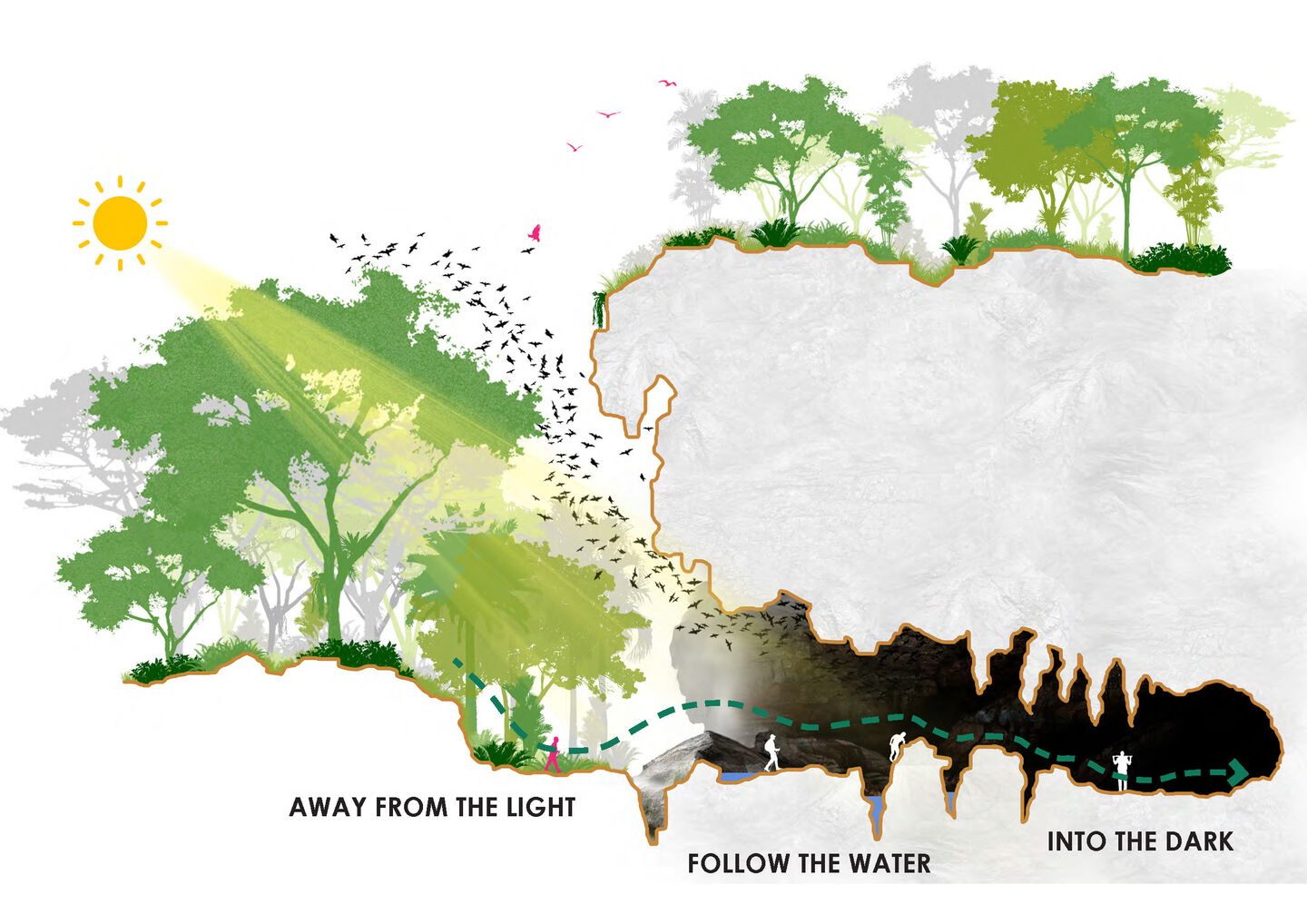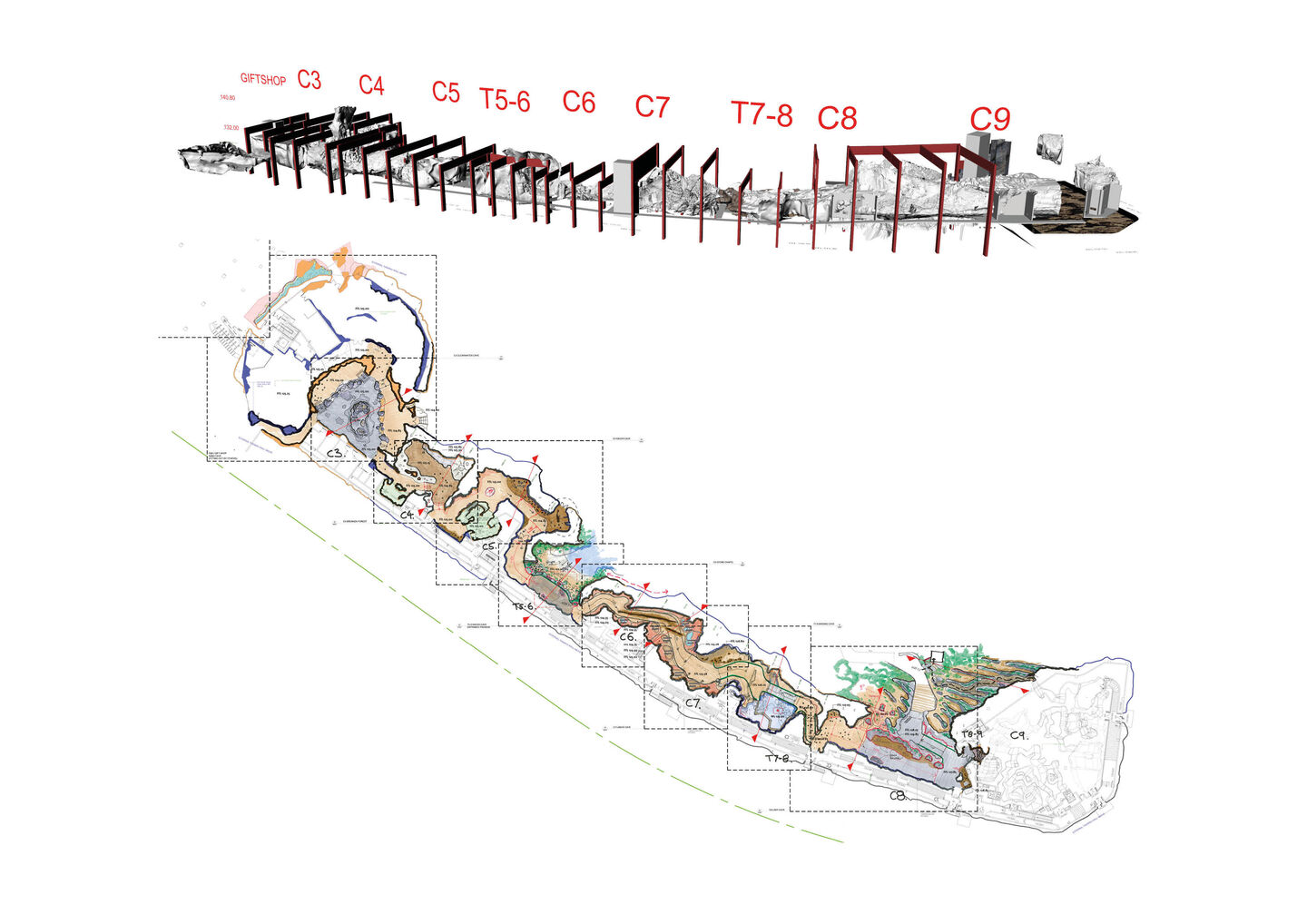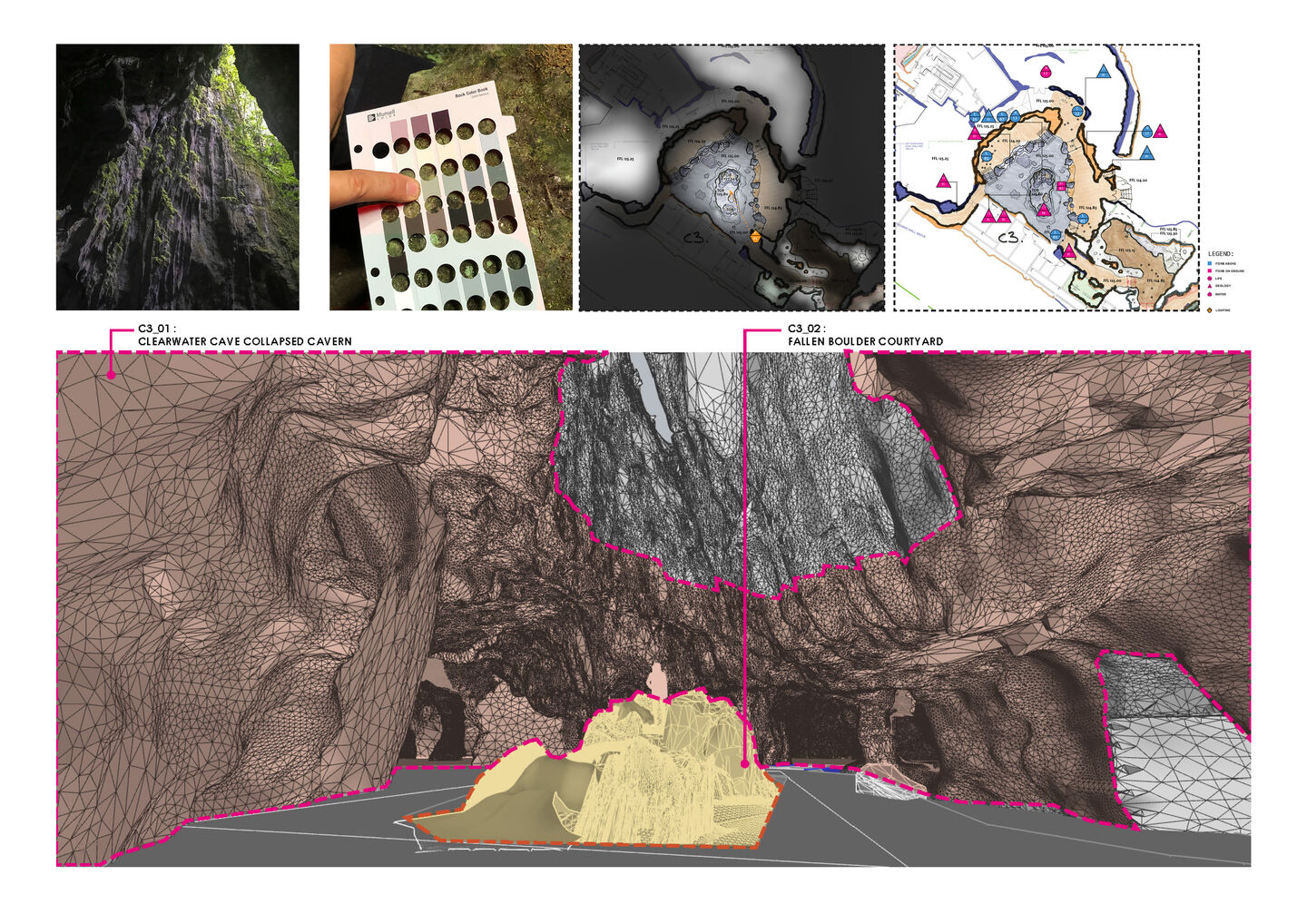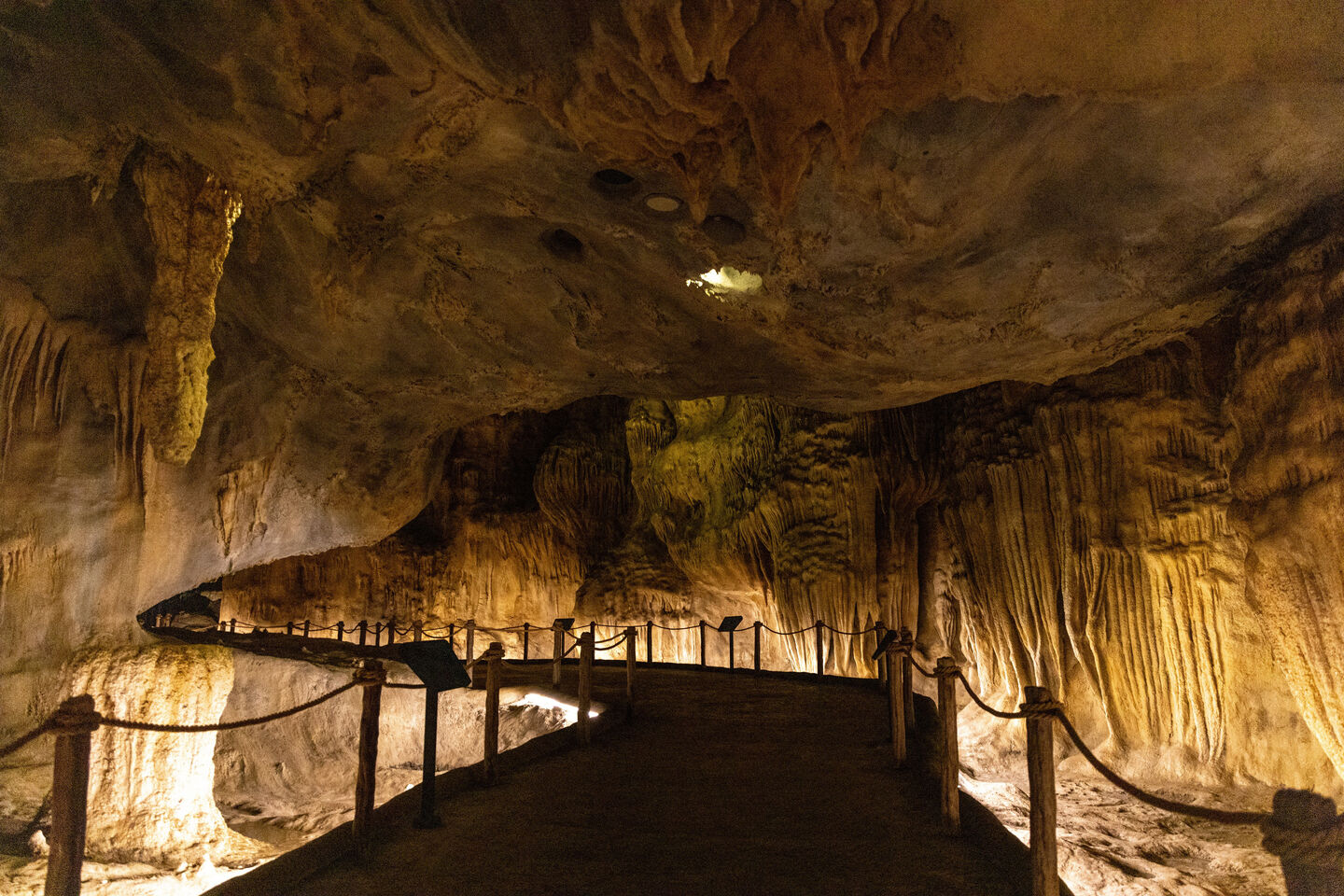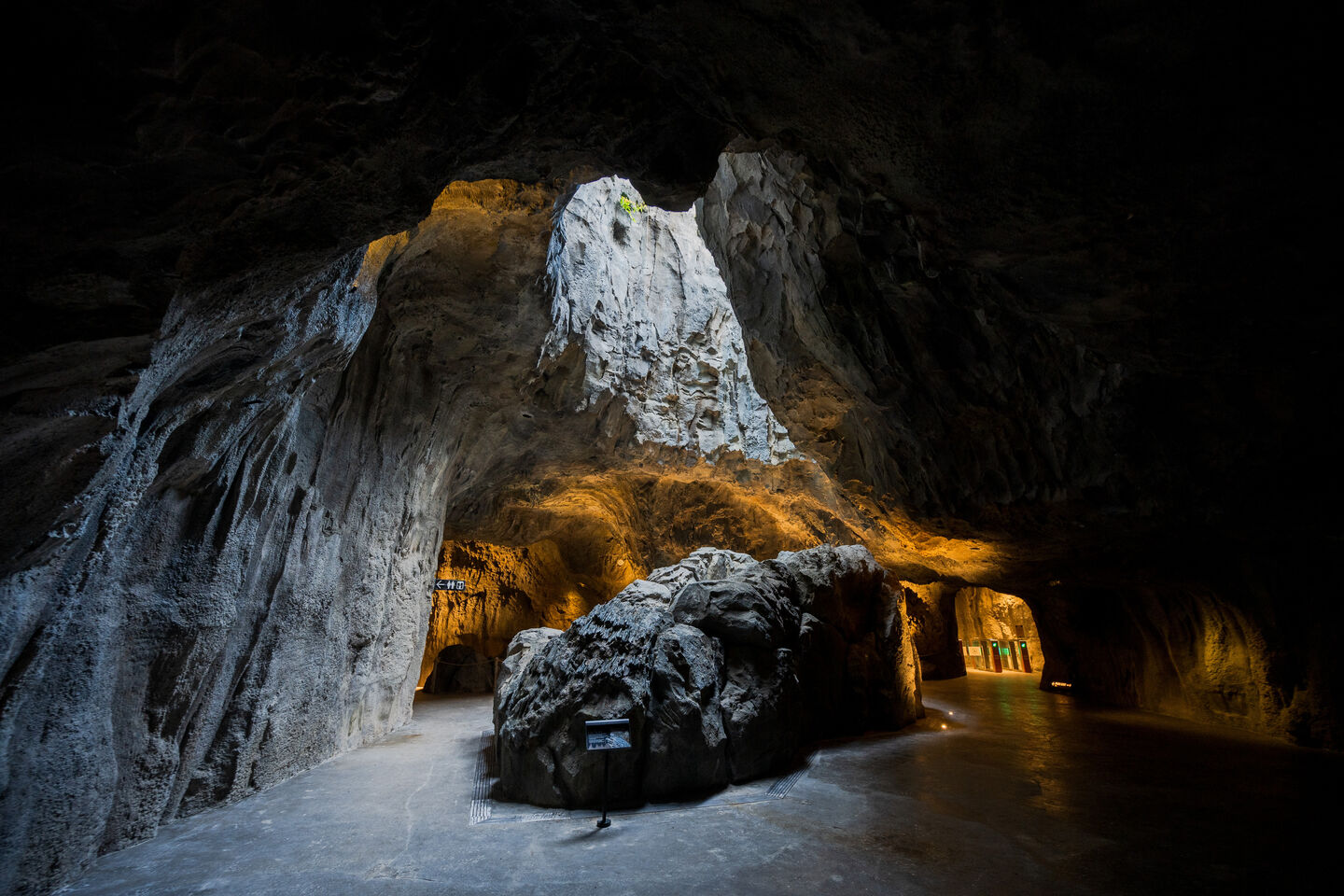

Rainforest Wild Asia
Singapore
In collaboration with the client team, we led the landscape vision from Concept Design to Tender, working alongside zoo designers and master planners, in close collaboration with architects, engineers, biodiversity specialists, adventure consultants, and lighting and irrigation experts. This multidisciplinary process ensured an ecologically sensitive yet engaging visitor experience. In 2020, the main contractor was awarded a design-and-build contract, with their consultant team continuing the refinement and implementation of the project.
Inspired by the region’s iconic rainforests, the design dissolves visible boundaries between people and wildlife, shaping immersive, sustainable, and deeply meaningful urban nature based experiences.
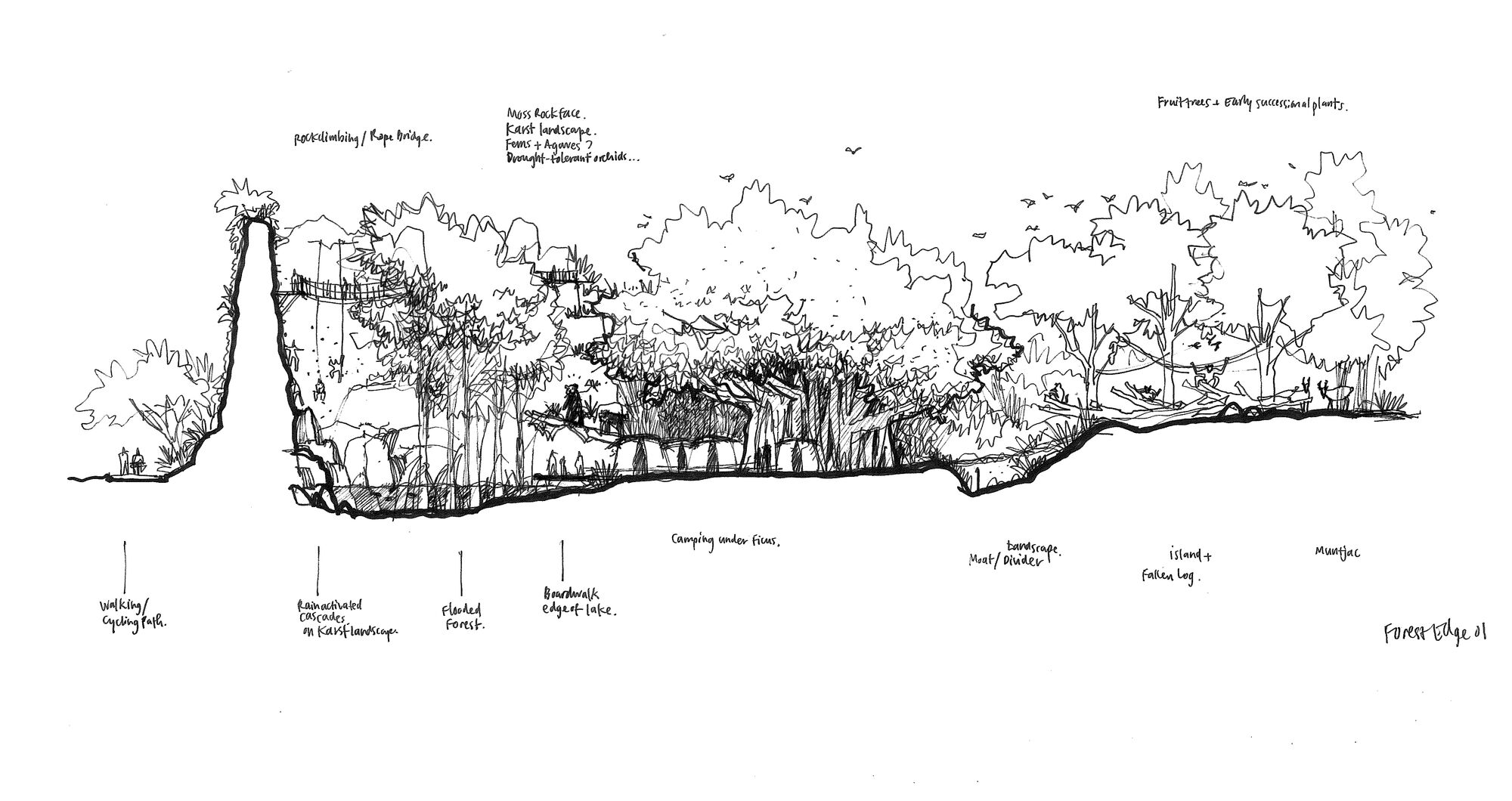
A Multi-Layered Adventure through the Rainforest
The design for Rainforest Wild Asia is conceived as an immersive ecological narrative. More than a zoological park, it is a layered journey where visitors engage with nature at various intensities— universal access paths, immersive ground trails, and extreme adventure components. This inclusive design ensures everyone can experience the wonder of the rainforest in a way that suits them.
Guided by the themes of Discovery, Regeneration, and Exploration, the park mimics diverse rainforest habitats, from shadowed forest floors to sun-dappled canopies. Trails and observation decks are carefully positioned to frame key ecological moments while maintaining visitor comfort.
Passive cooling strategies, minimal artificial lighting, and terrain-sensitive pathways are integrated throughout, reducing energy demands and environmental impact. These principles underpin a regenerative approach to development—one that protects existing ecosystems while inviting new growth.

Habitat
The site is a biodiversity-rich landscape adjacent to Singapore’s Central Catchment Nature Reserve, comprising disturbed, mature, and young secondary forests. Our design embraced this complex environment, including the presence of endangered and vulnerable species. A 45–50m ecological buffer was preserved along the site’s eastern edge, and construction was meticulously planned to avoid significant vegetation, mature trees, and known habitat zones. Where possible, affected species were carefully transplanted to protected areas within the new park. A zoned reforestation plan, encompassing full reforestation, buffer planting, selective repair, and fauna-specific strategies, restored degraded areas and reinforced native biodiversity. Planting palettes mirrored rainforest stratification, from understory shrubs to towering emergent trees, creating immersive, functioning habitats. Landscape features such as rock formations, waterfalls, and nutrient cycling zones were integrated to highlight key ecological processes.
Wildlife
Rainforest Wild Asia features open-concept habitats that support naturalistic behaviours and showcase ecological relationships. species (from the SEA rainforests) are displayed in expansive, barrier-free enclosures. Predator-prey dynamics are carefully curated, revealing the web of rainforest interactions. Habitat design supports animal enrichment, from species-specific features to sensory stimulation.The park features open-concept habitats that support naturalistic behaviours and showcase ecological relationships. Diverse Southeast Asian species are displayed in expansive, barrier-free enclosures. Predator-prey dynamics are thoughtfully curated, revealing the web of rainforest interactions. Habitat design supports animal enrichment, from species-specific features to sensory stimulation.
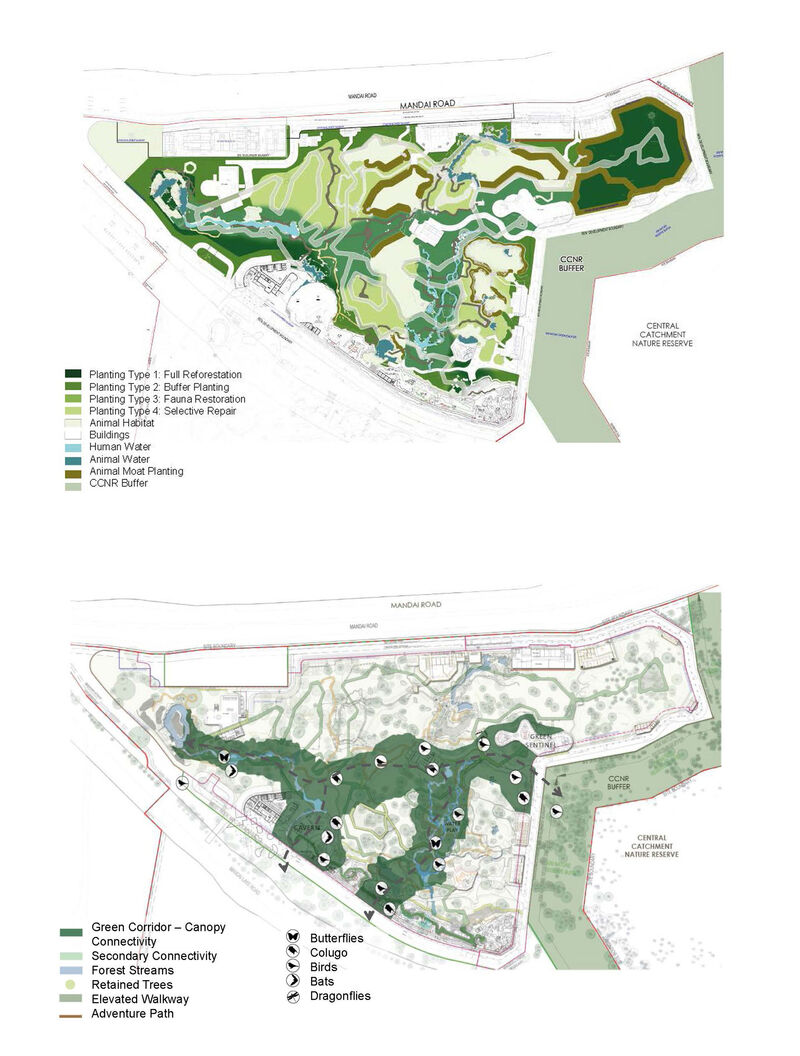
The proposed design interventions respect terrain and ecology, with elevated walkways, trails, and structures sensitively placed between retained trees. Significant species affected by construction were translocated to the new park, and felled timber was repurposed as furniture or thematic elements. Native flora is prioritised to support pollinators, seed dispersers, and other key ecological functions.
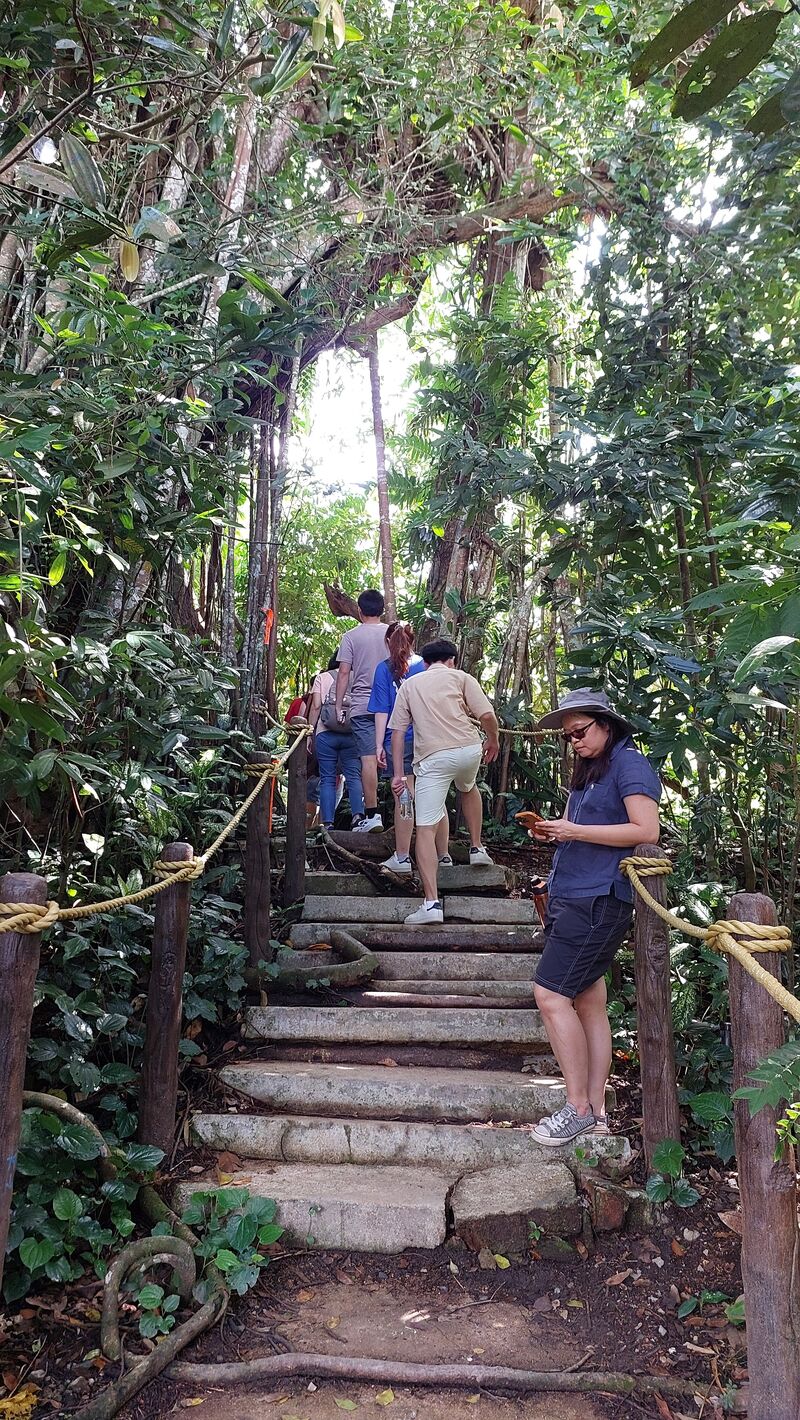
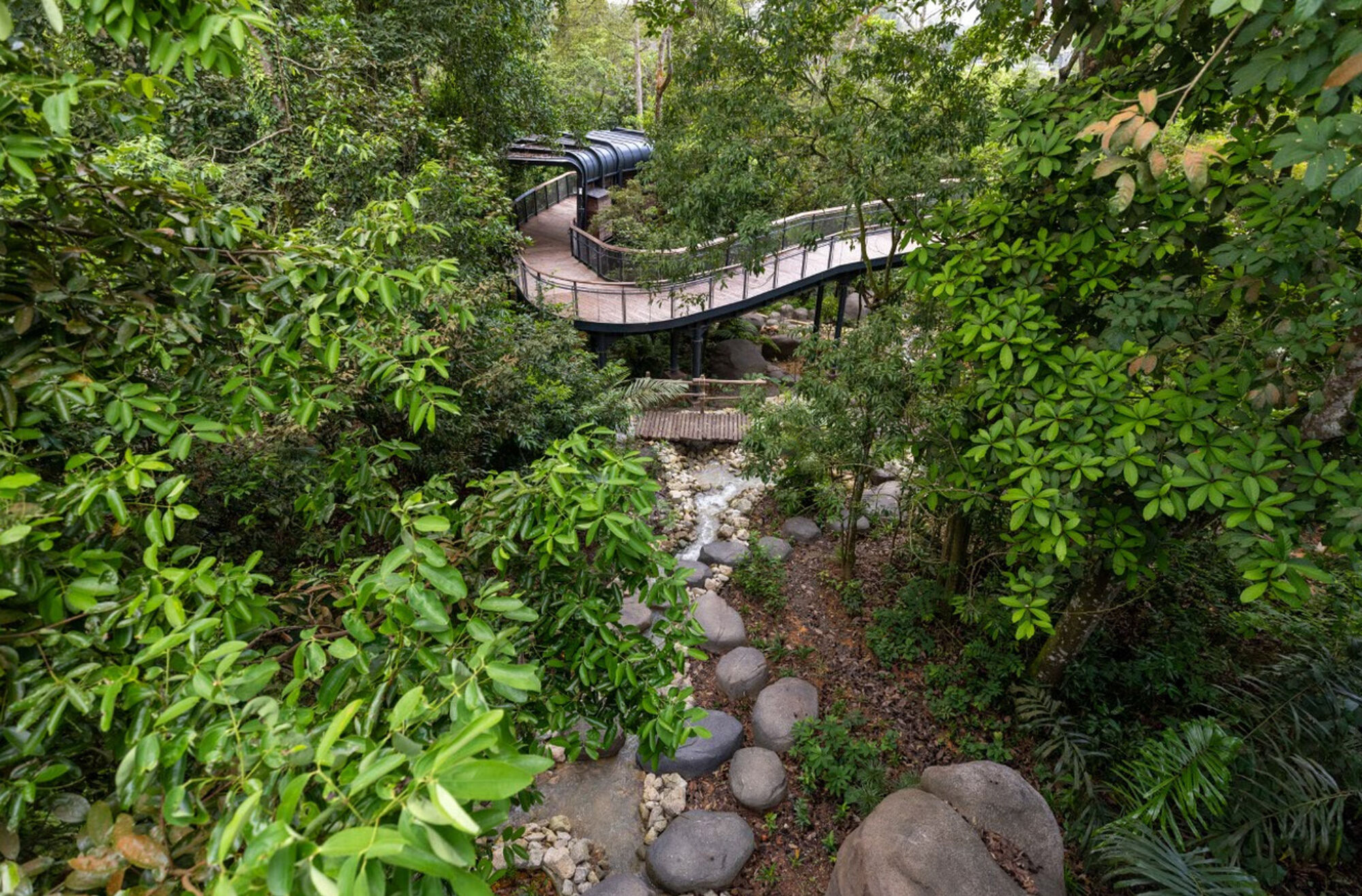
The park unfolds through a sequence of landscape zones, each inspired by Southeast Asia’s
ecological landmarks.
Entrance Zone: A dramatic rainforest gateway inspired by Gunung Mulu’s Garden of Eden, welcomes visitors with towering limestone cliffs, cascading waterfalls, and a shifting play of light and shadow. This space sets the stage for the sensory immersion to come.
Forest Edge: Evoking the limestone karsts of Vietnam’s Van Long National Park, this transitional zone introduces the concept of discovery. Perforated views through dense vegetation offer glimpses of langurs, while elevated walkways and bridges provide a thrilling climbing experience that mirrors the natural movement of primates.
Discovery Outpost: Referencing Laos’ Nam Khan National Park, this zone represents the last outpost before deep wilderness. Here, domesticated plant species blend seamlessly into native rainforest flora, emphasizing the shift from human-modified landscapes to untouched nature.
Forest Floor: Dense and atmospheric, this zone evokes Thailand’s Thung Yai with its shadowed undergrowth, encouraging quiet exploration among buttress roots and fallen logs.
Canopy Climb: Drawing inspiration from Taman Negara, this zone invites visitors to ascend into the treetops, experiencing the rainforest from the perspective of arboreal species. Suspended walkways and viewing platforms create a sense of trepidation and excitement.
Lost Forest: Modelled after Gunung Leuser in Sumatra, this shadowy, tangled zone rewards the observant with rare wildlife glimpses. The immersive design encourages visitors to slow down, observe, and appreciate the subtleties of the rainforest environment.
Watering Hole & Cavern: These offer moments of reflection and awe, where geology and hydrology shape the sensory experience.
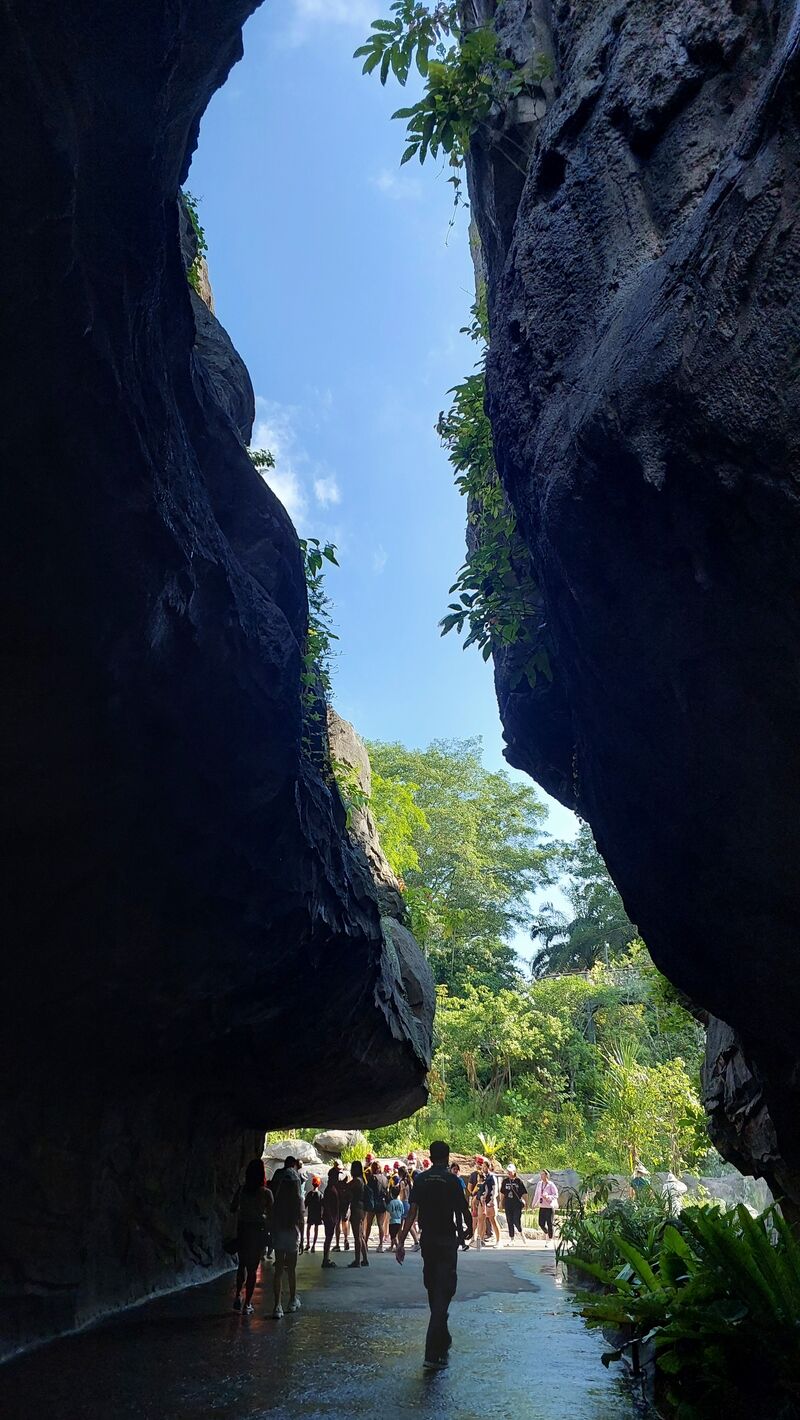
The Cavern: A Journey into the Underground Rainforest
Inspired by the Mulu Caves of Sarawak, The Cavern is the park’s most intricate and immersive habitat, an ambitious attempt to recreate the drama, complexity, and mystery of Southeast Asia’s subterranean landscapes.The vision was to create a realistic cave-like experience accessible to all, where light, darkness, sound, and texture evoke the drama of real caves. Visitors move through a progression of nine chambers, each revealing distinct geological features and a narrative of time, highlighting how water sculpts stone, how daylight defines habitat zones, and how life persists even in the absence of light. From stalactites and mineral curtains to echoing vaults and narrow crevices, the cave becomes a spatial journey through water, rock, and time.The design explores the role of light in shaping cave ecologies — entrance, twilight, and pitch-black interiors—and introduces micro-ecosystems shaped by guano, fungi, and bat colonies.
Our team conducted in-depth field research, including two week-long expeditions in Mulu with world-renowned caving experts, to understand spatial qualities, colour, acoustics, and orientation in true darkness. We collaborated with specialist contractors to collect geological data, colour samples, and mineral references for fabrication.Advanced digital tools underpinned the design. High-resolution 3D laser scans of cave surfaces were processed into BIM models to coordinate structure, accessibility, and safety. Mineral formations were digitally sculpted to convey both narrative and scientific accuracy. Critical constraints—such as ceiling clearance, universal access grades, and wayfinding in low light—were resolved through iterative modelling.The cavern experience offers a compressed, authentic, and safe journey into Earth’s hidden ecosystems, where education, emotion, and wonder converge.
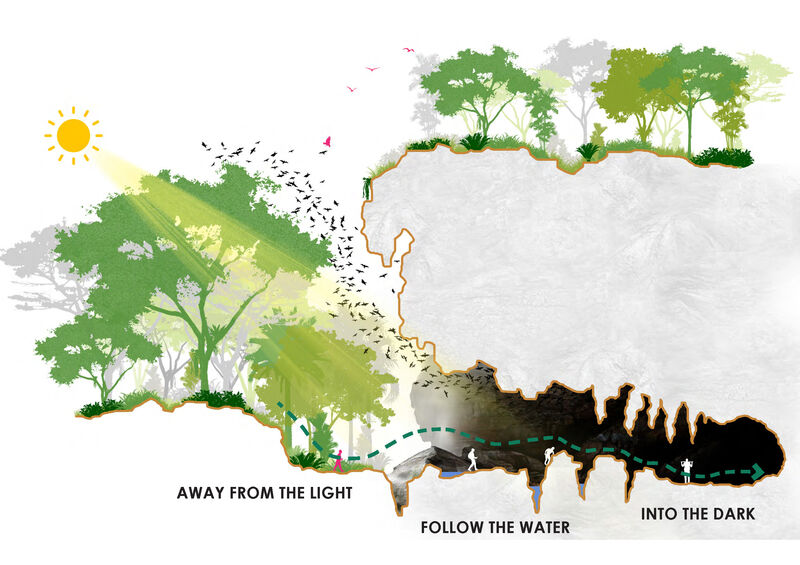
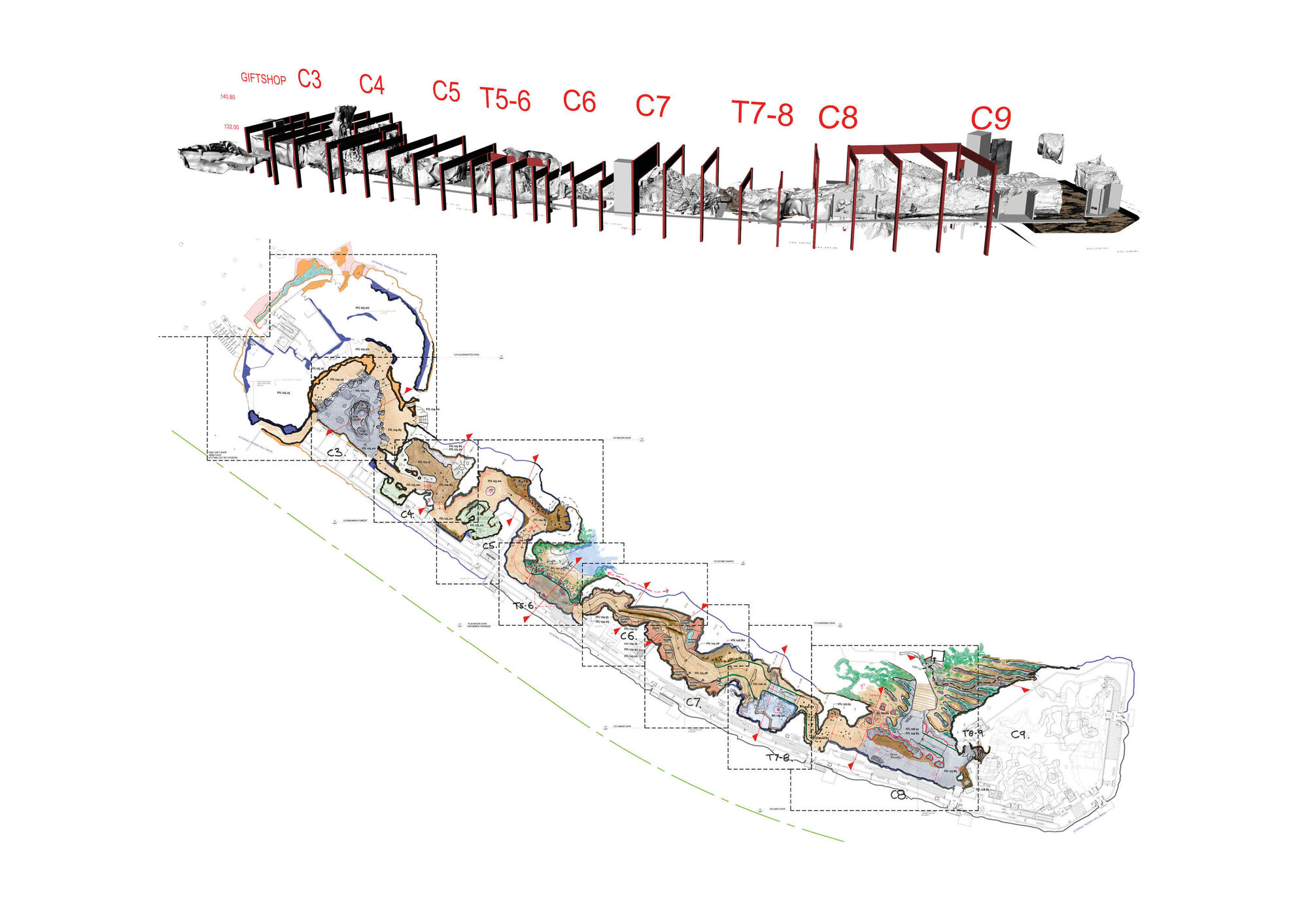
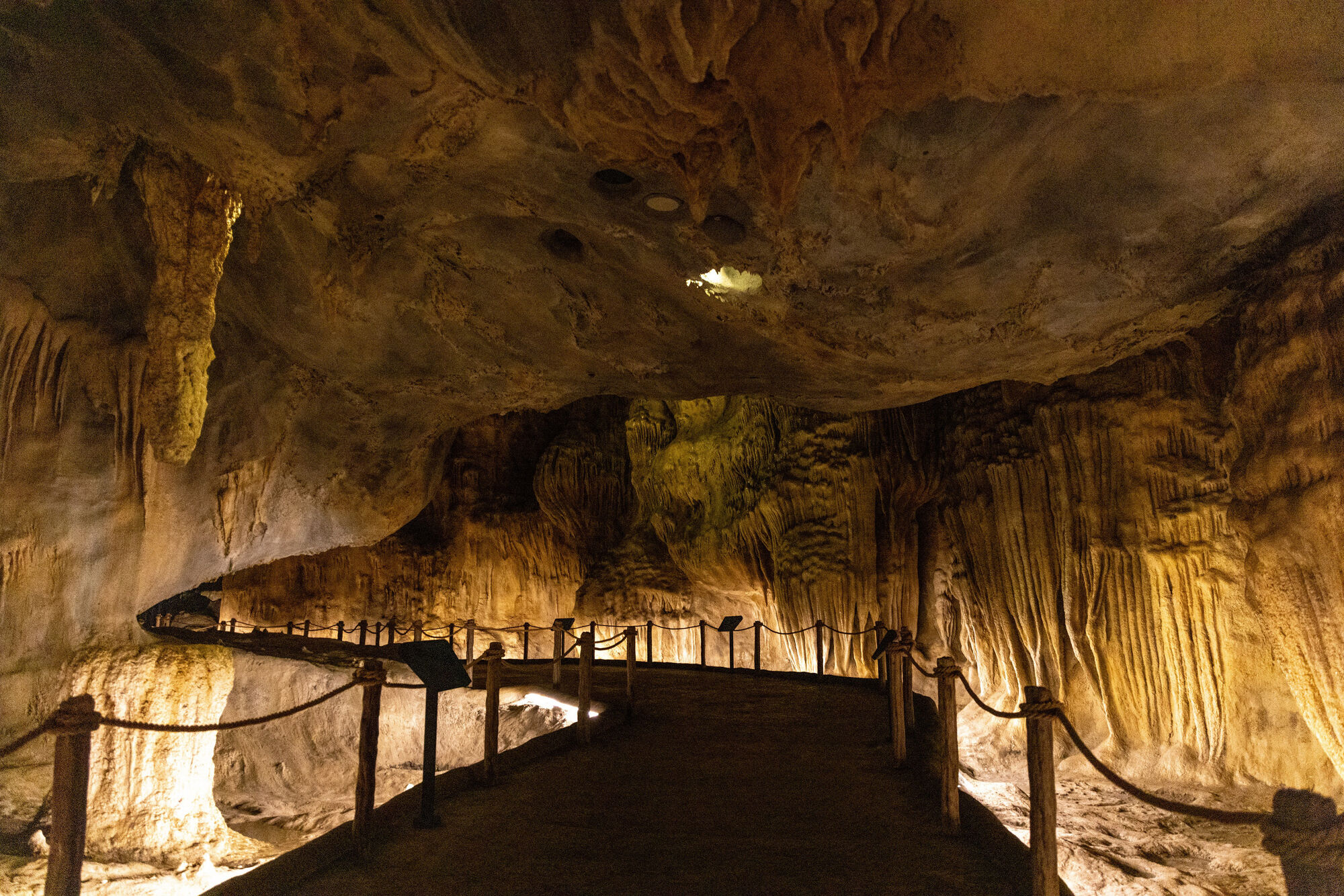
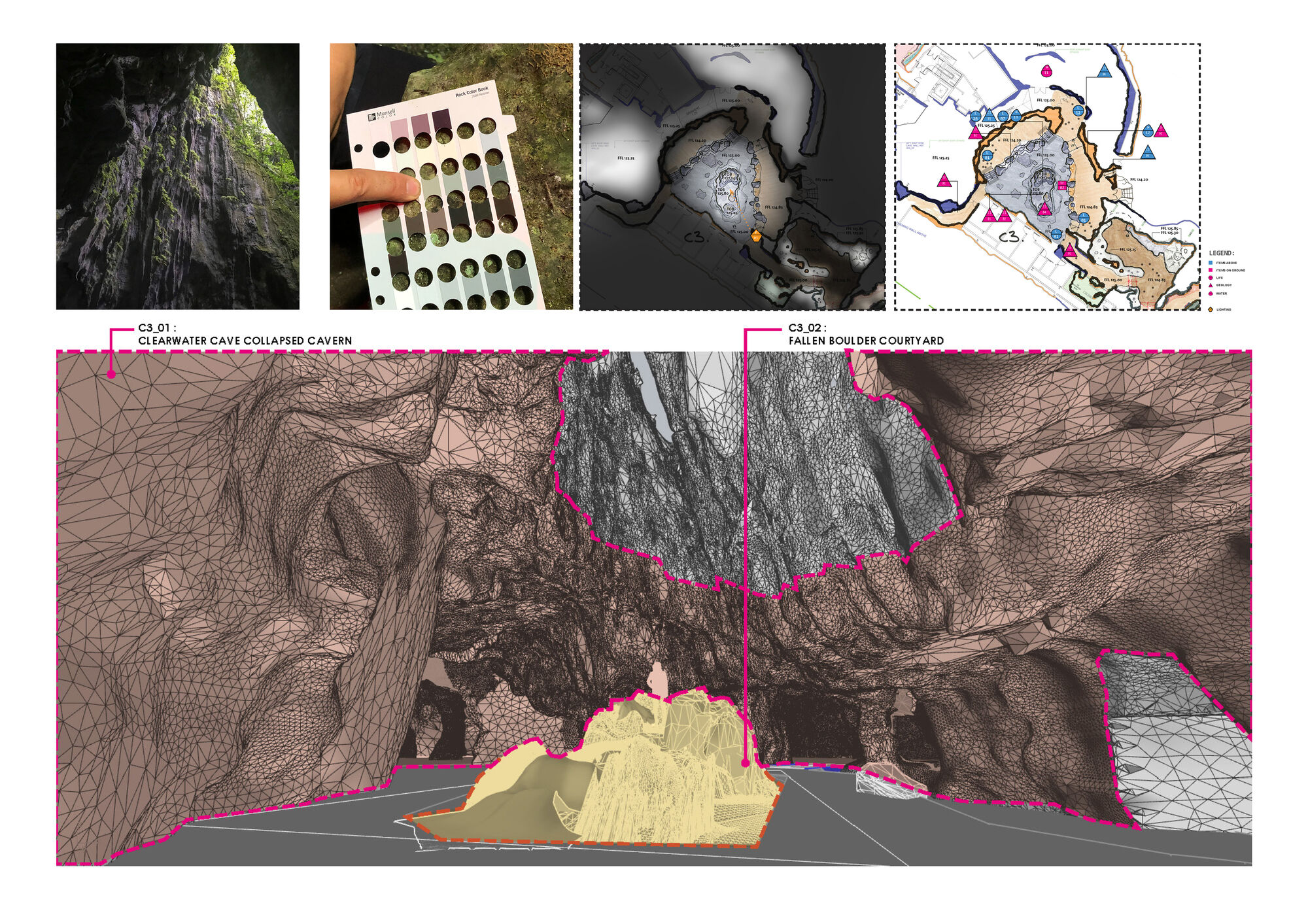
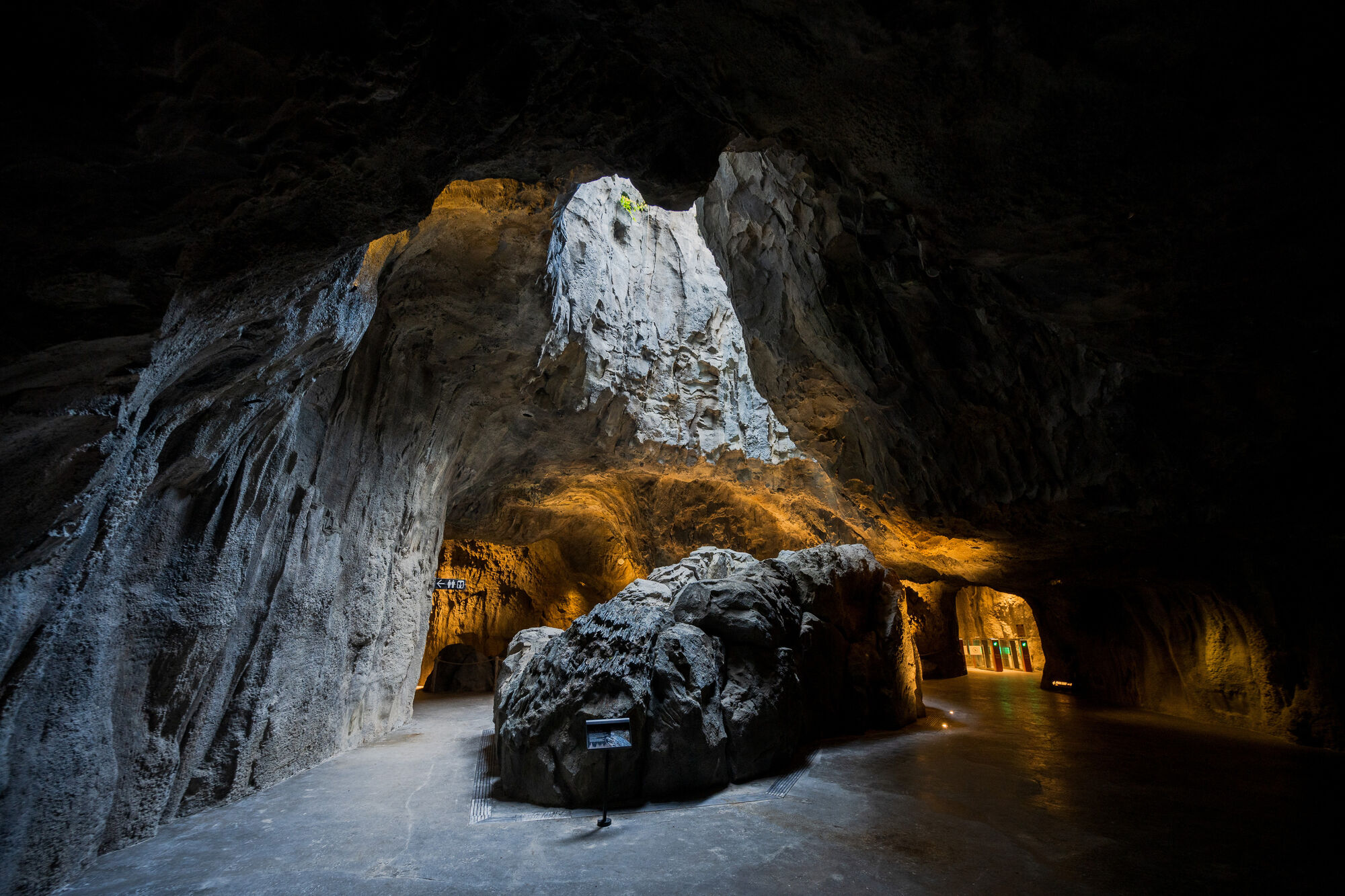
Connecting People with Nature Experience, Access, and Storytelling
Throughout Rainforest Wild Asia, the goal is to shift the visitor from passive observer to active participant. Trails are sequenced to heighten emotional progression—from curiosity to awe. Interpretive storytelling is embedded into landscape elements, revealing how ecology, geology, and culture intersect in Southeast Asia’s rainforests.
Universal Design was a cornerstone. Trails, canopy walkways, and cave experiences are barrier-free, designed to support wheelchairs, strollers, and mobility aids. Rest points, sensory gardens, and quiet areas accommodate a wide spectrum of needs, ensuring inclusivity across age and ability.
More than 7,000 native trees and shrubs were introduced, reinforcing biodiversity and creating instant impact on opening day. Elevated walkways preserve topographical profiles and ground vegetation, while water-sensitive design features—swales, raingardens—manage runoff on the hilly terrain. The park operates primarily in daylight, reducing artificial energy demand and mitigating light pollution for nocturnal fauna.
From start to finish, the visitor journey is carefully composed, balancing adventure, education, and comfort to create a 2–3 hour immersion in rainforest life.
